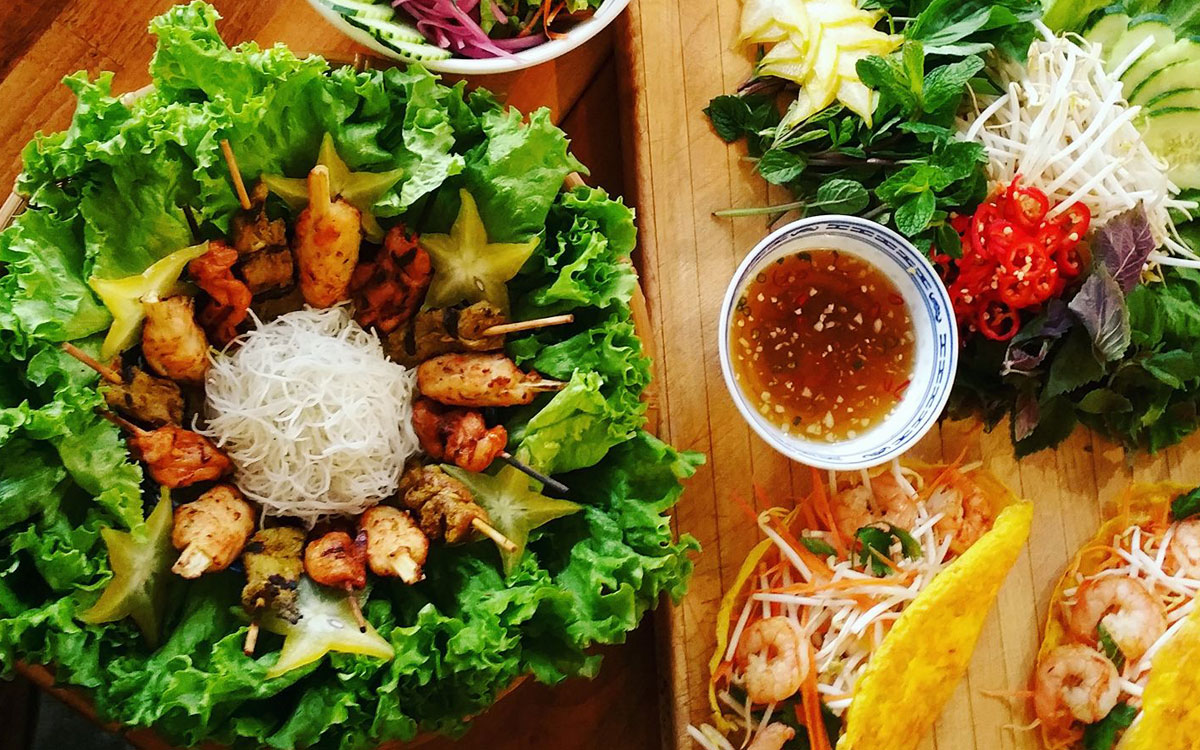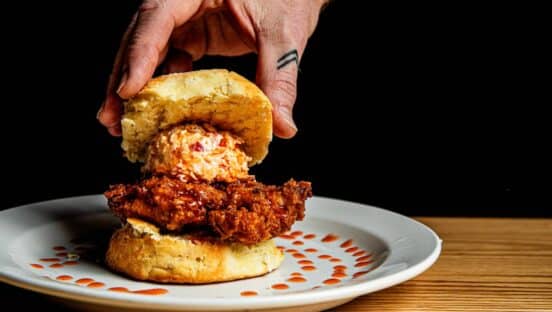Founder Mary Nguyen Aregoni has big plans for Chicago-based Saigon Sisters Hospitality restaurant group. Currently, Aregoni, who grew up in Laos before moving to Kentucky in 1976, has two brands—Bang Chop Thai and Vietnamese brand Saigon Sisters—with six locations total, all within 2 miles of each other in Chicago.
READ MORE: Why Saigon Sisters is a Chicago fast casual to watch.
Her niche? Quick, authentic Thai and Vietnamese dishes. With her concepts thriving on big lunch crowds, simple menus, and small spaces, she can imagine her brands with a national and even an international presence. QSR spoke with Aregoni about the flavors of her childhood, the keys to her success, and where she sees her brands in the future.
What are some of your favorite food memories?
Having a really amazing croissant. When I was in elementary school in Laos, there was a guy who would come around with goods from his little bakery. They smelled of yeast and French butter. I looked forward to that every morning. It was very luxurious. I’m still looking for that croissant.
Another food memory would be every day I would bring my brother and sister to the open market—where my mom worked as a distributor and wholesaler—to eat lunch. We always ate pho or street food, but I loved going to this woman who sold a noodle-fish-seafood soup. I loved that soup. It’s like a noodle soup with coconut milk and fish. I would eat there every day and afterwards go and find snacks. We just grazed in the market while my mom was working.
Have you incorporated the fish soup in your menus?
That’s more of a Thai thing, but we have a similar thing in Vietnamese food. It’s called Bun Rieu, which is crab soup dish, which I put on Saigon’s restaurant week menu. On the Bang Chop side, I’m considering bringing it over to the spring menu.
What are your favorite menu items at your restaurants?
For Saigon, I like seafood, so I love the Banzino—fish, tumeric, and dill. It’s a whole fish that’s filleted. It’s a lot of flavors, but not a lot of calories and healthy. I go to that a lot.
For Bang Chop, I like the Thai Papaya Salad and the sticky rice. How we ate as a child, you have this salad, then you have a soup. It’s like a mini bento box. I don’t like to eat just one plate of something. I like to have a little bit of everything.
You’ve built your company from a single kiosk in 2009 to six locations now over two brands. What has been the key to Saigon Sisters’ success?
I think having a really good, clear message on the cuisine that we serve, and a menu that is short, sweet, and not too complicated or confusing to people. It’s hard enough for people to understand Vietnamese cuisine. When you go to a traditional Asian restaurant, it can be overwhelming, because there’s so much to choose from.
The quality of food needs to be very consistent, too.
The other thing is we love conversing with customers, telling them about the food and its health benefits. We try to instill that in our cashiers during training.
You also need to have long-term employees who are loyal to the brand, so I don’t have this revolving door of cooks coming in and out, training and retraining them.
How do you keep employees involved and engaged with the business?
First, you definitely need to know them: what makes them tick, what motivates them.
I don’t have a lot of managers. I come in, I talk to my employees, ask how everything is going. They have direct, open communication with me. People like that. They like to have access to the owners and not having to deal with just somebody above them.
I learned over the years, if they have direct access to me, and I spend some time working with them and learning about how I can help them, they feel valued. And, thus, they feel loyal and want to grow with me and help me. I want them to be champions for the brand.
Then, you need to give employees some freedom to dictate their own time. I’m not going to sit there and say, ‘Oh my gosh, you’re 20 minutes late. I’m writing you up.’ Because they stay 20 minutes later. I give them a little freedom where they’re not micromanaged.
What has been the hardest lesson to learn in growing your business to the scale it is now?
I would say its the knowing when to grow and how to do that with very little capital and resources, while not putting the business that you’ve built in jeopardy.
How have you approached those situations so far?
My strategy is I will only do what I can manage, and I’m not going to jump into something that I don’t have the capacity or money to do. It would be a big mistake. Over the years, I have learned what works for me is a very small space with a captive audience, big lunch crowd, and no competition in this cuisine. What I’m following is my demographic. If I find a place that fits those qualifications, I can afford to do it, and I have people to do it, I will do it. But if I don’t, then I just have to wait until I can.
Do you see yourself growing the business more in Chicago, or do you see other cities in your future as well?
I’d like to take the concepts as far as I think they can go, which is nationally and then internationally. I see my brand in airports, in Dubai … just like Shake Shack has done. There is so much room for growth in these concepts. And nobody is really cracking the code to make Vietnamese or Thai mainstream like Panda Express has done with Chinese food.
I’d like to partner my brand with airports and food halls. I know that I can open there pretty easily because the infrastructure is there already. I just need to go in and operate. I like to make authentic Vietnamese and Thai food accessible and available for people, so they don’t have to go out of their way to find it.




